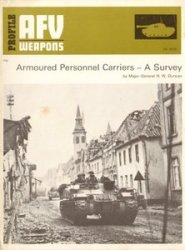In common with other parts of the world, much of what might be considered historical archaeology on the African continent has been concerned with the verification of various written historical sources, especially those concerning the pre-modern era. Outside of Egypt and Nubia, where texts written using the hieroglyphic script first emerged in an archaic form perhaps as early as 3400-3200 BCE, the main areas where this has been attempted are Libya and adjacent parts of North Africa, the East African Swahili coast, and Sudanic West Africa. In the former two areas, the primary relevant texts are those written by Greek and Roman authors (although for more recent centuries, Arabic sources are also of value), while for West Africa, the earliest documentary sources derive from the writings of Arabic scholars such as Ibn Batuta and Al Bekri. In all three areas, scholars have tended to give primacy, until recently, to the available written sources, with the result that certain misrepresentations and distortions within these texts assumed the status of historical fact (see Writing Systems).
Perhaps the best-known example of this concerns the use by successive generations of archaeologists of the text known as The Periplus of the Erythrean Sea, which probably dates to around CE 40. The Periplus includes a description of a sea voyage along the East African coast from a trading emporium known as Opone just south of the Somali Peninsula, to the ancient town of Rhapta, as well as details of some of the products exported from Africa, that included ivory, ambergris, and slaves. As these were mostly nondurable raw materials for which evidence is unlikely to be preserved in archaeological contexts except under special circumstances, the text provides valuable information about the trade. Understandably, it has been used from an early stage in research on the Swahili coast to supplement the evidence gleaned from archaeology of the wide range of durable products that were being imported.
The Periplus contains much less information about the societies that occupied the East African coast, apart from descriptions of various landmarks and other ports that lay along this route. Some of the topographic features of the coast, such as the Lamu archipelago and Mount Kilimanjaro, are readily identifiable from the descriptions, and using these in conjunction with the sailing directions that are also provided, scholars have sought to link some of the known archaeological sites with the various ports and settlements named in the Periplus and the other important early text, Claudius Ptolemy’s Geography (c. CE 150). Few if any of these, including Rhapta, however, have been identified unambiguously. Moreover, the two texts provide conflicting information about the geographical location of several of the places named, making it especially difficult to derive an accurate topography of the East African littoral during the late first millennium BCE to early first millennium CE from these sources alone. Thus, for instance, Pemba or Zanzibar would be the best estimates for the location of the island of Menouthias based on the information given in the Periplus, whereas the coordinates given in the Geography would place this island much further south in the vicinity of Madagascar. This discrepancy, in turn, has a bearing on the possible location of Rhapta. From the description provided in the Periplus, Rhapta lay about 88 miles to the south of Menouthias, which would place it near Bagamoyo or Dar es Salaam in modern Tanzania. Whereas, in the Geography, Rhapta is said to lie far to the north of Menouthias situated on a small island set in a river, which could be a reference to the Lamu archipelago close to the modern border between Kenya and Somalia. In view of such problems, scholars no longer regard the Periplus and Ptolemy’s Geography as detailed guides to site locations, but instead as valuable, but ambiguous, testimony to the existence of long-distance trading links between East Africa and the Mediterranean world in the first few centuries of the Christian Era.




 World History
World History









